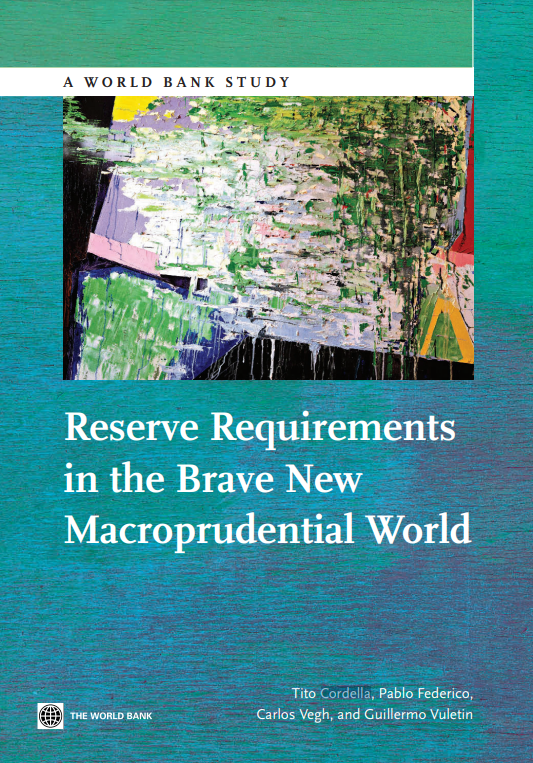Reserve Requirements in the Brave New Macroprudential World
Editorial: The World Bank Group
Licencia: Creative Commons (by)
Autor(es): Cordella, Tito; [et al.]
In the aftermath of the global financial crisis, it is hard to find any macroeconomic policy report that does not include some reference to financial stability or systemic risk and the resulting need for "macroprudential policies." While there is a large and growing literature on macroprudential policies and financial stability, less attention has been paid to how macroprudential policies may facilitate macroeconomic stabilization in the presence of large capital flows. To fill such a gap, this report looks at the use of reserve requirements (RR) as a macroprudential tool. Its findings should be of particular interest to emerging market economists and policymakers that are faced with difficult questions regarding how to cope effectively with volatile capital flows. The analysis builds upon a new dataset on quarterly RR covering a large number of industrial and developing countries for the period 1970-2011. It finds that while no industrial country has resorted to active RR policy since 2004, almost half of developing countries have. Indeed, together with interest rates adjustments and forex interventions, RR seem to be an important component of a trio of policy instruments that developing countries have relied upon to navigate through the boom-bust cycles driven by capital flows. The ultimate reason for resorting to RR lies essentially on the procyclical behavior of the exchange rate over the business cycle in developing countries (with the currency depreciating in bad times and appreciating in good times) that complicates enormously the use of interest rates as a countercyclical instrument. Under such circumstances, RR are an effective instrument that can be used countercyclically when concerns about the effects of interest rates on the exchange rate become paramount. Finally, the report suggests that while, from a macroprudential point of view, the most common macroprudential instruments are equivalent, from a microprudential one they are not. Conflicts may thus arise between the micro- and macro-prudential policy stances. In addition, the overall design of macroprudential policies should follow a careful analysis of the role that different financial frictions play in various environments since similar symptoms can reflect very different underlying forces.
[Washington: 2014]
Compartir:
Una vez que el usuario haya visto al menos un documento, este fragmento será visible.


